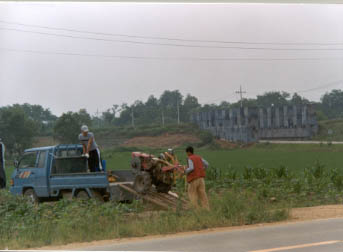

To the far right is the road leading to Panmunjom. You can see
vaguely the tank traps on both sides of the road in camouflage
cover.
There are many of them and they are ready to be blown off to block the
road in case of North Korean invasion. Seoul, South Korean
capital
is less than 30 miles from Pamunjom.
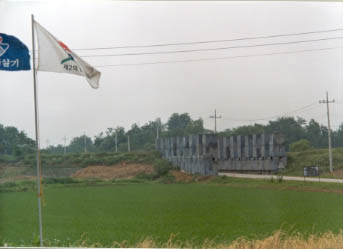
The tank trap pass.
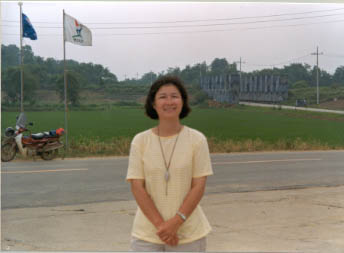
I am in front of the tank trap pass.
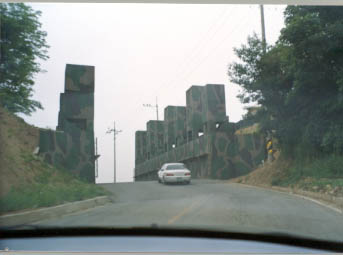
A closer look at the same tank trap pass. These cement blocks
are full of dynamites.
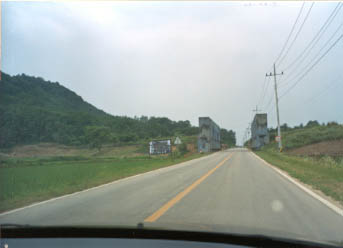
Another tank trap pass along the road leading to Panmunjom.
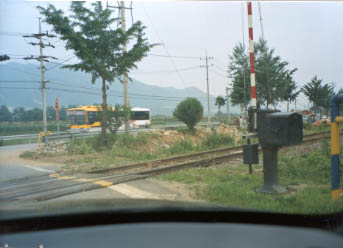
This is the railroad that leads to North Korea.
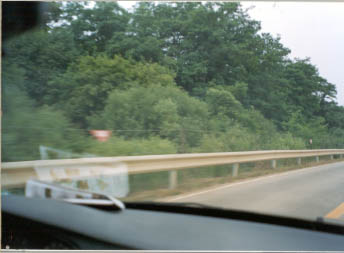
Along the highway from Seoul to Panmunjom, there are miles of mine
fields
like this. The triangular signs in dark red color along the left
side of the road mark the mine fields. The South Korean
government
has begun the process of sweeping land mines in some of the areas near
the demarcation line.
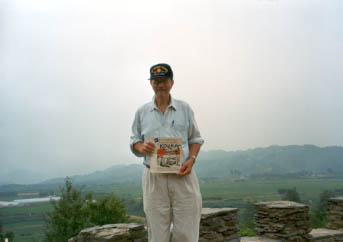
Mr. Patrick Sbarra, who was a medic during the Korean War, stands on top of the White Horse Hill once he defended.
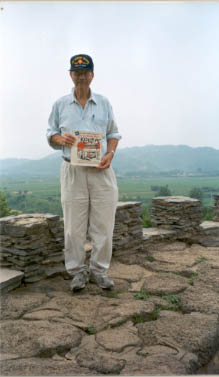
Another photo of Patrick
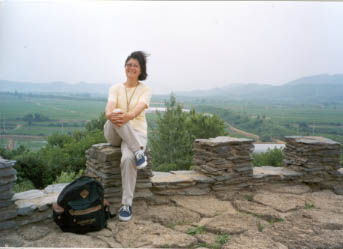
I am sitting on top of the White Horse Hill. Behind me are the
mount ridges of the demmarcation line.
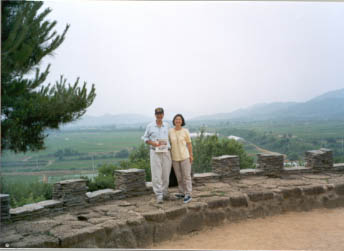
I am with Patrick atop the White Horse Hill.
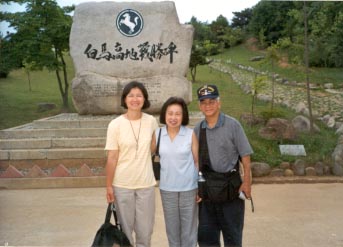
I am with Mr. and Mrs. Leong in front of the White Horse Hill tablet sign. Mr. Leong joined the US army to fight in the Korean War soon after he got married. During the 50th Korean War anniversary in Seoul, battlefield sites and Panmunjom were closed to civilian visitors and opened only to the Korean War veterans. I kept bugging the USO staff and finally joined this group of US veterans as Mr. & Mrs Leong's "daughter-in-law". I was very lucky.
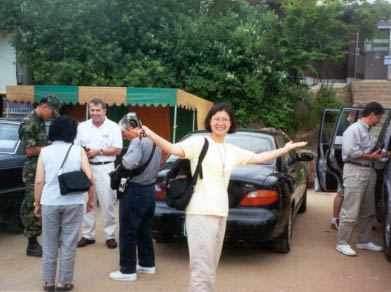
At the foot of the White Horse Hill. To the left, a ROK soldier is checking our visit pass. I was with a group of US Korean War veterans organized by the USO. Jerry Brenot, 3rd from left, is from USO in charge of the tour.
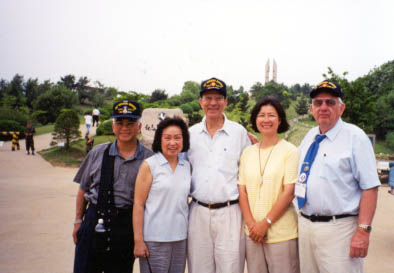
I am with the US Korean veterans: left to right, Mr. & Mrs. Leong of New York, Patrick Sbarra of New Jersey, and Herold Alexander of Oregon.
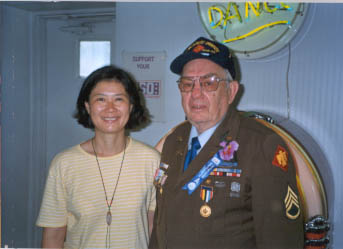
I am with Herold Alexander. His children helped gather all the
medals to make a complete set of his uniform he had 50 years ago for
the
50th anniversary in Seoul in 2000. He and Patrick
fought
in the same army unit on the White Horse Hill.
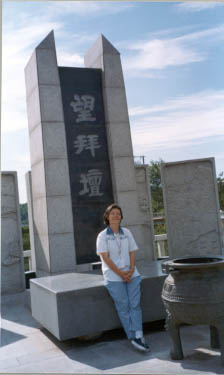
This is an altar that stands on the southern side between the North and South Korean border. The border line is less than 100 yards from this altar. The Chinese characters say "Longing Altar" expressing the desire of the Koreans from both sides for the reunion.
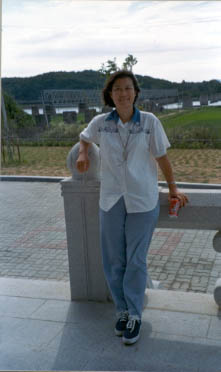
Behind me is the border between South and North Koreas. There are barbed wires on this side of the Han River. In fact, I am only about 10 yards from the Altar, the photo above.
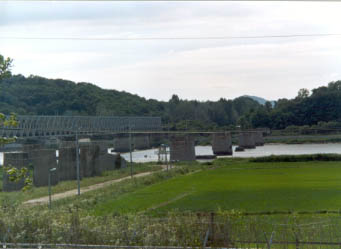
A closer picture of the partitioned area. The railroad bridge across the river is not in use. The other side, North Korea, seems to be within hand reach.
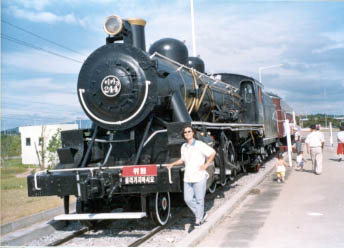
This is the locomotive that stopped running when the Korean War broke out in June 1950. The railroad is going to be reconnected soon, one of the new projects by the South Korean government to move toward the final unification of the peninsula. The sign in front of the locomotive says; " I want to go!" The locomotive in display is on the same area of the above picture. If the railroad will be reconnected, the train will run through the bridge in the picture above.
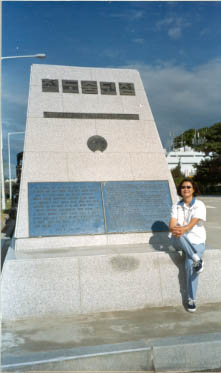
A memorial on the side of the locomotive.
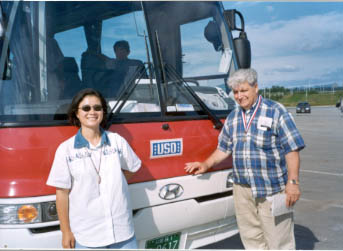
Korean War veteran Sandy James of New Jersey, who was a Marine in
the
war. This is our USO bus in the tour. We are in the parking
lot for the site we visit above. Sandy told me that he had to
come
back to Korea for his fallen Marines who did not return
home.
After the visit, we had dinner in a Chinese restaurant downtown Seoul.
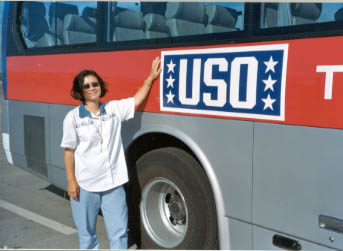
Our USO bus.
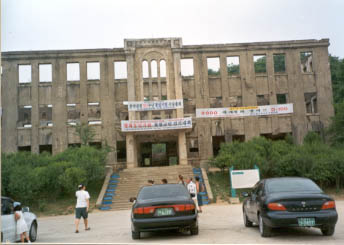
This is the front of a damaged building during the North Korean
invasion
of South Korea in June 1950. It is now preserved as a historical
site.
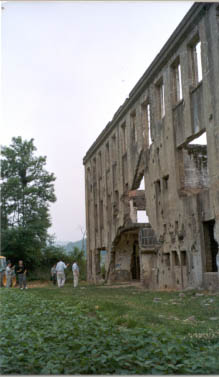
The back side of the building.
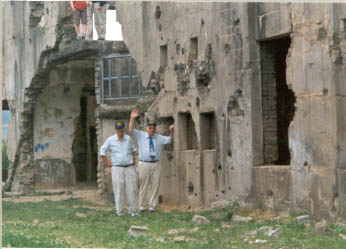
Patrick and Herold are in the back side of the damaged building.
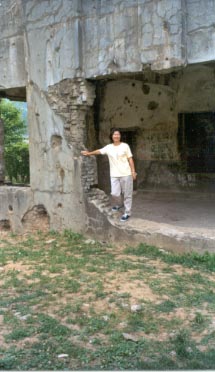
I am standing in the damaged part of the same building.
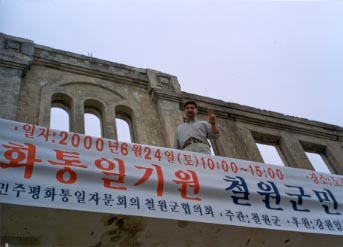
Herold's son is standing on top of the building.